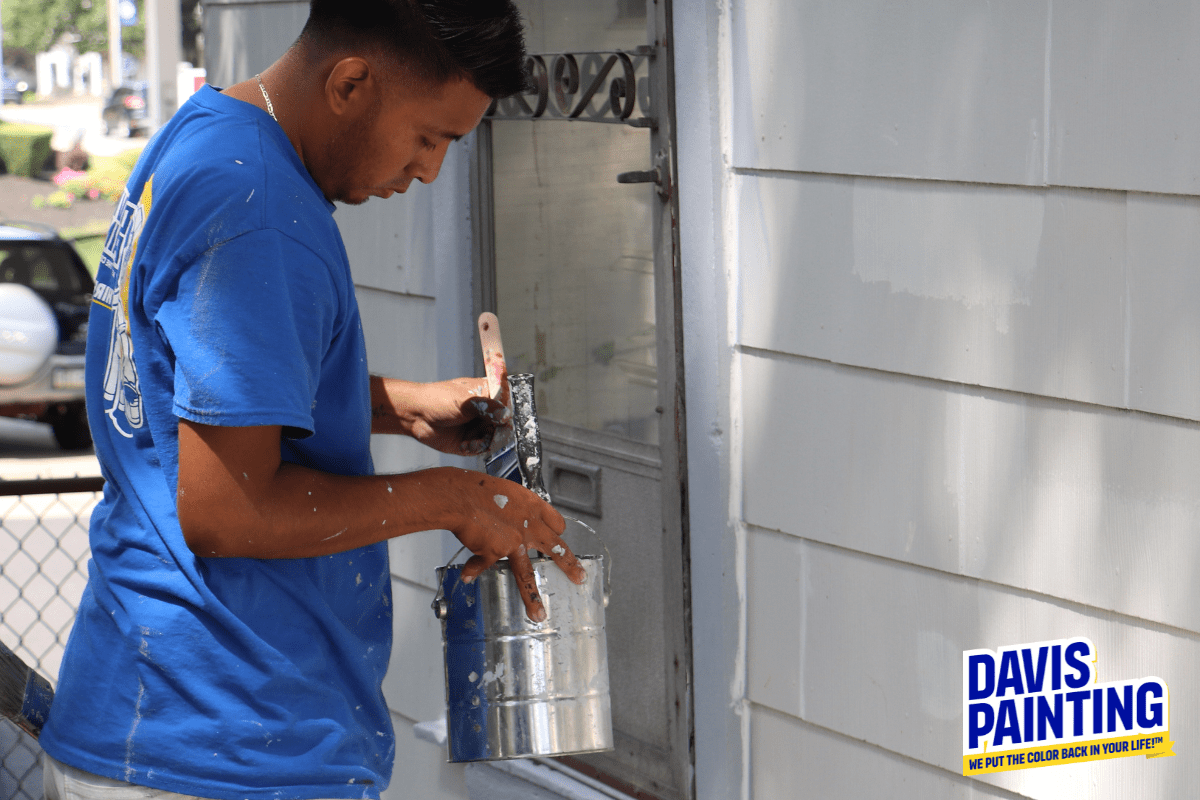When it comes to painting your home, one of the most important decisions you’ll make is choosing the type of paint. The two primary categories are oil-based and water-based (also known as latex) paints. While both types can provide beautiful finishes, they have key differences that affect their appearance, durability, application, and environmental impact.
At Davis Painting, we’ve worked with both oil-based and water-based paints on a wide range of projects. Understanding the pros and cons of each can help you make the best choice for your space. In this blog, we’ll break down the major differences between these two types of paint and guide you on when to use each.
1. Composition and Drying Time
Oil-Based Paints:
Oil-based paints are made with natural oils (such as linseed) or synthetic oils (like alkyd). This type of paint dries by oxidation, meaning it hardens as it reacts with oxygen. Oil-based paints tend to dry slower, which can be both an advantage and a disadvantage, depending on your project.
- Drying Time: It typically takes 6-8 hours for oil-based paint to dry to the touch, and up to 24 hours for a second coat.
- Pros: The slower drying time allows the paint to level out, reducing visible brush marks for a smooth, professional finish.
- Cons: You’ll need to wait longer between coats, and it may take several days for the paint to fully cure.
Water-Based Paints:
Water-based paints use water as the primary solvent, making them quick-drying and easier to work with for most DIY projects.
- Drying Time: Water-based paints dry much faster, usually within 1-2 hours, and a second coat can often be applied within 4-6 hours.
- Pros: Faster drying times mean projects can be completed in less time.
- Cons: The quick drying time can make it challenging to achieve a perfectly smooth finish, as brush marks can dry before they level out.
2. Durability and Performance
Oil-Based Paints:
Oil-based paints are highly durable and resistant to wear and tear, making them ideal for surfaces that endure heavy use, such as trim, doors, and furniture. The hardened finish makes them less susceptible to scratches and dents over time.
- Pros: Excellent durability and a smooth, tough finish that resists scuffing and staining.
- Cons: Oil-based paints can yellow over time, especially in areas with low light, and they tend to crack or peel as they age.
Water-Based Paints:
Water-based paints have improved dramatically in recent years and are now much more durable than they once were. They are highly flexible, allowing them to expand and contract with temperature changes, which helps prevent cracking.
- Pros: Water-based paints resist fading, retain their color longer, and are less likely to crack or peel.
- Cons: While durable, they may not hold up as well as oil-based paints in high-traffic or high-moisture areas like kitchens or bathrooms.
3. Application and Clean-Up
Oil-Based Paints:
Oil-based paints have a thick, smooth consistency that provides excellent coverage and a glossy, high-end finish. However, their application can be tricky, especially for beginners.
- Pros: Oil-based paints provide excellent coverage, often needing fewer coats, and have a rich finish.
- Cons: Clean-up requires harsh chemicals like mineral spirits or paint thinner. Brushes and rollers need to be carefully cleaned, and spills are harder to remove.
Water-Based Paints:
Water-based paints are much easier to apply, especially for homeowners who want a quick, hassle-free project. The paint glides on smoothly and typically requires only soap and water for clean-up.
- Pros: Easier to work with, clean-up is simple and environmentally friendly with just water. It’s also more forgiving when it comes to drips and mistakes.
- Cons: You may need more coats to get the same depth of color and coverage as oil-based paints.
4. Environmental Impact
Oil-Based Paints:
Oil-based paints contain higher levels of volatile organic compounds (VOCs), which are harmful chemicals that release into the air as the paint dries. These can contribute to poor indoor air quality and environmental pollution.
- Cons: Higher VOC content, making them less eco-friendly. The disposal of oil-based paints also requires special care due to their chemical composition.
Water-Based Paints:
Water-based paints are much more environmentally friendly, with low or no VOCs, making them a safer choice for both your home and the environment.
- Pros: Low or zero VOCs, safer for indoor use, and easier to dispose of. Davis Painting often recommends water-based paints for eco-conscious homeowners looking to reduce their environmental footprint.
5. Best Uses for Each Type of Paint
When to Use Oil-Based Paint:
- Doors and Trim: Oil-based paints provide a smooth, durable finish that stands up to the constant opening, closing, and handling of doors and trim.
- Furniture: For furniture pieces that get heavy use, oil-based paints offer long-lasting protection.
- High-traffic areas: Oil-based paints excel in areas where you need toughness and durability, such as floors or surfaces exposed to heavy wear.
When to Use Water-Based Paint:
- Interior Walls: Water-based paints are perfect for walls and ceilings in living rooms, bedrooms, and hallways where quick drying times and low odors are key.
- Exteriors: Modern water-based exterior paints are highly durable and resistant to fading, making them ideal for outdoor surfaces like siding and trim.
- Kitchens and Bathrooms: Water-based paints with added mildew resistance are a great choice for humid areas like kitchens and bathrooms. One of Davis Painting’s favorites is Benjamin Moore’s Aura Bath and Spa.
Which Paint is Right for Your Project?
Both oil-based and water-based paints have their unique benefits, so the best choice depends on the specific needs of your project. If you’re looking for a long-lasting, durable finish on doors, trim, or furniture, oil-based paint might be your best bet. On the other hand, if you want an easy-to-apply, quick-drying, and environmentally friendly paint for your walls, water-based paint is the way to go.
At Davis Painting, we have extensive experience working with both types of paints. Whether you’re tackling an interior makeover or need a durable finish for high-traffic areas, our team can help you choose the right product and ensure a flawless, professional result. Contact us today for expert advice and top-quality painting services!



